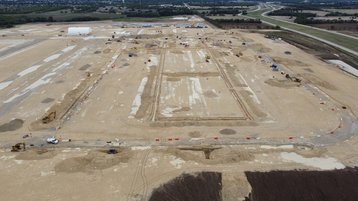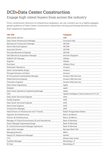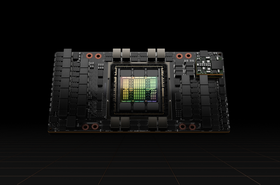Meta reduced its capital expenditure spend by around $3 billion this quarter amid a pause in data center building.
Capital expenditures for Q3 2023, including principal payments on finance leases, were $6.8bn, which the company said was driven by investments in servers, data centers, and network infrastructure. CapEx costs for the same quarter last year were $9.52bn.
“Capital expenditures were below the prior year levels primarily due to lower server and data center construction spend as we prepared to shift to our new data center design, as well as payment timing,” said Meta CFO Susan Li.
The social media firm paused around a dozen construction projects globally in December 2022 amid a “rescope” to accommodate AI-centric designs. The company has restarted at least two sites – in Temple, Texas, and Kuna, Idaho – with the new design to support denser GPU deployments for artificial intelligence workloads.
The cost of revenue increased by nine percent, though “higher infrastructure-related costs” were partially offset by lower content costs.
The company said it expects its CapEx costs for the year to reach $27-29bn, down slightly from the original $27-30bn.
However, Meta anticipates its full-year 2024 capital expenditures will be in the range of $30-$35bn, with growth driven by investments in servers – including both non-AI and AI hardware – and in data centers as the company ramps up construction on sites with its new data center architecture.
The company expects AI to be the largest area of increased investment over 2024 as it continues to invest in Generative AI.
The company also expects a “step-up” in infrastructure-related expense growth next year and to incur higher operating costs from running a larger infrastructure footprint.
“We had to pause some of our existing data center construction work to switch over to the new data center architecture that played through in some of our 2023 CapEx dynamics,” said Li during the earnings call. “And going forward, as I think we said when we introduced the concept of this architecture, we expect it to be more cost-efficient for us. We expect it will give us greater fungibility in the way that we plan for CPU and GPU capacity. So we expect that we'll be realizing the cost benefits and efficiencies and the planning flexibility that the architecture gives us in the years to come.”
When asked about the cost of serving up AI-powered content to users, during the earnings call CEO Mark Zuckerberg said the company said the company was “bottlenecked” right now around the size of AI training models it can use and the amount of people it can serve, which can impact efficiencies.
Meta believes that the new design will be 31 percent cheaper and take half the time to build over the previous approach.
"We've now gone to market with our design, and the sort of response we've gotten back has given us confidence that our projections are coming to fruition," Alan Duong, Meta’s global director of data center engineering, told DCD for a profile on Meta's new data center design.
That profile is in the latest issue of the DCD Magazine, out now.








